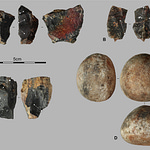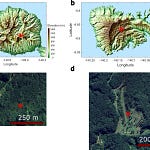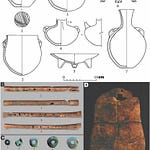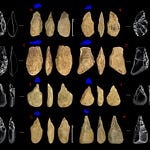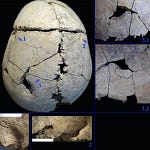The Invisible Target
In the southern Kalahari, under a blistering sun, a bowhunter edges toward a grazing antelope. He tracks minute depressions in the sand. He reads the animal’s posture. His body stills. His fingers flex around a bowstring, already drawn. He breathes. Then lets go.
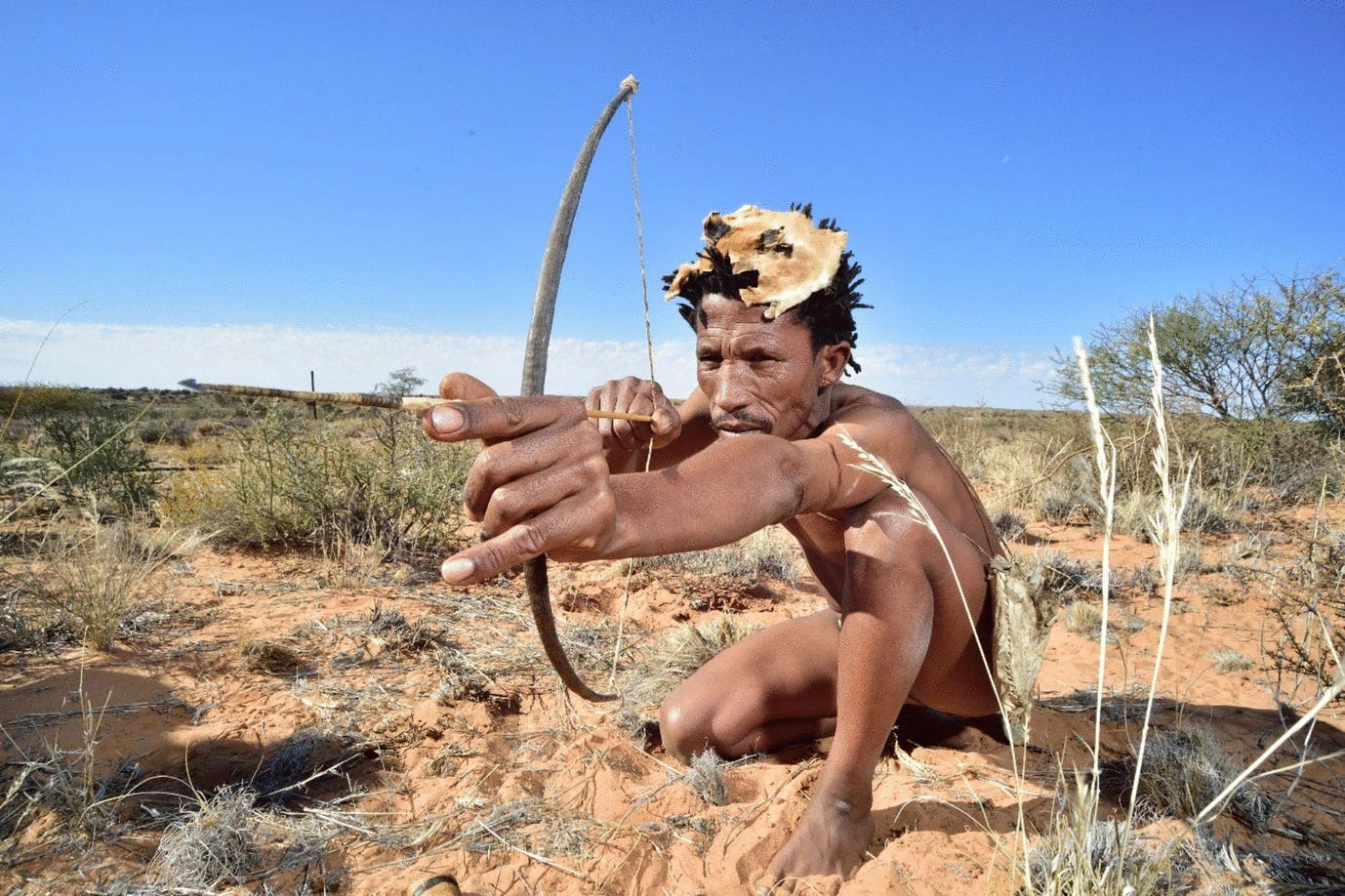
To observers, this moment might seem like a feat of athleticism or experience. But behind the scenes—in his brain—a complex network of cognitive machinery has been working overtime. According to new research published by Marlize Lombard in the Journal of Archaeological Method and Theory1 (2025), this kind of precision hunting may have shaped the evolution of the Homo sapiens brain itself.
“Bowhunting is not just a physical task—it’s a techno-behavioral symphony that requires the mind to orchestrate multiple layers of attention at once,” Lombard writes.
At the center of this orchestration? A curious fold of neural real estate called the precuneus.
Why Bowhunting Matters
Unlike thrusting spears or stone tools, the bow and arrow demands sustained visual focus, split-second timing, social coordination, and the ability to track objects—prey—beyond immediate reach. Lombard identifies bowhunting as a "complex techno-behavior," and argues that this complexity played a pivotal role in shaping the modern human brain.
“The bow is not just a tool; it’s an extension of the self across space. To use it effectively is to imagine a trajectory, calculate velocity, focus attention over distance, and anticipate the prey’s movement,” she explains.
This level of abstraction requires multiple forms of attention: executive control, visuospatial tracking, sustained vigilance, and introspective awareness. Each type taps a different neural circuit. Lombard argues that no single ancestral hominin—Neanderthals included—had this precise cognitive blend.
The Precuneus: Silent Architect of the Modern Mind
The precuneus, nestled in the parietal lobe, is one of the most functionally diverse regions of the brain. In Homo sapiens, it is unusually large compared to Neanderthals and Denisovans. It helps us visualize space, plan tasks, track moving targets, and regulate internal states of focus.
Lombard proposes a feedback loop: as humans developed complex tools and hunting strategies, selective pressures favored individuals with enhanced precuneus function.
“We’re talking about a shift from basic survival to meta-awareness—tracking a herd, coordinating with a hunting partner, focusing across distance, and reflecting on the danger of your own poisoned arrow.”
To test this hypothesis, she analyzed 587 genes with key differences between modern humans and our closest extinct relatives. Of these, 330 showed expression in the precuneus, and 42 had direct associations with attention regulation.
Every one of these 42 genes was involved in sustained attention, with the majority also governing executive function, visuospatial attention, and attention switching. In short: the genetic scaffolding for the kind of attention bowhunting demands.
Fire, Glue, and Poison: The Hidden Work of Hunting
Bowhunting isn't only about the moment of release. It starts days earlier—with toolmaking.
Lombard draws on detailed Kalahari ethnographies to document how hunters carve bows from raisin bush wood, spin sinew into string, and grind animal bones into lethal arrowheads. They harvest tree gum and crush poison grubs, sometimes mixing them with chewed bark to create deadly adhesives.
Each stage demands different cognitive faculties:
“Twisting sinew requires split bimanual coordination. Fire-starting with stick friction demands intense executive attention. Glue-making calls for constant attentional switching between materials and heat levels.”
And then there’s the final act—the stalk. As hunters crawl silently toward a herd, they rely on hand signals, wind direction, prey behavior, and their partner’s position. All while suppressing fear and maintaining laser focus.
“To miss a step is to lose the hunt. Worse, to mishandle poison is to risk death.”
From Bowstrings to Brainwaves
This model has broader implications. Bowhunting, as practiced by early Homo sapiens, may represent a tipping point in cognitive evolution—a moment when behavior shaped neuroanatomy in return. While stone tools could be knapped and used within minutes, arrows and poisons took days to prepare, requiring future planning, memory recall, and collaborative instruction.
“We’re not just seeing skilled hands—we’re seeing minds capable of multi-layered focus, deeply embedded social coordination, and flexible attention networks,” Lombard argues.
Neanderthals, despite sophisticated tool use, left no evidence of systematic bowhunting. That cognitive gap may stem from precuneal differences—differences Lombard ties to specific genes under selection in modern humans.
The Quiet Revolution of Attention
If Lombard is right, the bow isn’t just a symbol of human technological ingenuity—it’s an evolutionary force. It helped sculpt a brain region central to what makes Homo sapiens human: the ability to focus across time, space, and social contexts.
“Evolution didn’t just favor sharper stones. It favored sharper attention.”
Today, the precuneus remains deeply involved in tasks from math to meditation. But its roots, Lombard suggests, may lie in the dust trails of ancient hunters, who aimed not only with their arms—but with minds built for focus.
Further Reading and Related Research
Bruner, E., & Colom, R. (2022). "The evolution of attention in the human precuneus." Frontiers in Human Neuroscience, 16, 874901. https://doi.org/10.3389/fnhum.2022.874901
Bradfield, J., Wadley, L., Lombard, M., & Reynard, J. (2020). "Poisoned bone: A possible Middle Stone Age arrowhead from Klasies River." South African Journal of Science, 116(11/12), 1-4. https://doi.org/10.17159/sajs.2020/8282
Kuhlwilm, M., & Boeckx, C. (2019). "A catalog of single nucleotide changes distinguishing modern humans from archaic hominins." Scientific Reports, 9, 8463. https://doi.org/10.1038/s41598-019-44877-x
Schlebusch, C. M., et al. (2017). "Southern African ancient genomes estimate modern human divergence to 350,000 to 260,000 years ago." Science, 358(6363), 652–655. https://doi.org/10.1126/science.aao6266
Daffner, K. R., et al. (2015). "The impact of sustained attention on cognitive performance in aging populations." Neuropsychologia, 71, 84–98. https://doi.org/10.1016/j.neuropsychologia.2015.03.005
Lombard, M. (2025). From complex techno-behaviour to complex attention through the genes of the precuneus. Journal of Archaeological Method and Theory, 32(3). https://doi.org/10.1007/s10816-025-09716-6



